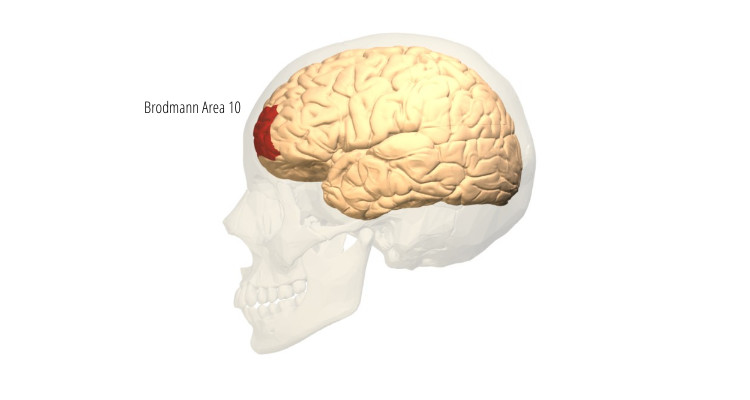https://cdn.steemitimages.com/DQmPsu5UUXTfXXM9sQQub3xFMCzT2BU9c6AapoXweq2He3W/Brain%20FI%20-%20BS.png
PR is a real person who, together with another 56 individuals, took part in the experimental study conducted by Lemaitre et. al (2018)
[ref.]( https://www.ncbi.nlm.nih.gov/pubmed/29122369).

PR is a married 43 year-old man, who works as a butcher in a supermarket, and has two-children. In 2004, PR had a generalized seizure. His MRI showed that his left frontal cortex had been invaded by a tumour (a DLGG – a diffuse low grade glioma). Part of PR’s left prefrontal cortex was then removed. The prefrontal cortex is the most anterior part of the brain. This is a brain region which, over the course of our species’ evolution, underwent changes that has made possible for us, humans, to develop abilities which granted us a unique place in the animal kingdom. High-order cognitive abilities, like critical thinking, is an example of this. But it doesn’t stop here. Because we, humans, have also developed the ability of “knowing that we know”, or of “thinking about our own thoughts”. Something which in the neuropsychological world is known as *metacognition*. It has been thought that this function critically depends on both functional and structural properties of the pre-frontal cortex and, above all, its most anterior part: the Brodmann area 10 (BA10). Four years after his surgery, in order to prevent the glioma invading deeper brain structures PR underwent chemotherapy for 18 months. Unfortunately, the glioma still progressed into the left pre-frontal cortex, and in 2010 a second procedure was performed. PR’s entire pre-frontal cortex was removed under “wide-awake” conditions. Functional magnetic resonance imaging (fMRI) studies have demonstrated an association between the anterior pre-frontal cortex activity and metacognition performance. Beyond “knowing about knowing” metacognition is also at the basis of self-awareness. This is also a function that enables the reorganization of mental processes and allows us to strategize and plan. Abilities which accuracy decreases following damage to the left or right pre-frontal cortex, as demonstrated by early neuropsychological studies
[ref.]( https://www.ncbi.nlm.nih.gov/pubmed/29122369). But, back to PR. In 2014 the merciless glioma infiltrated into his brain’s right hemisphere, consequently leading to yet another surgical procedure. In the end, overall, PR’s surgeries’ included the complete removal of his left pre-frontal cortex, and the total removal or his left and right BA10. According to Lemaitre and his colleagues (p. 49), PR is:
“probably the only person in the world to have undergone very extensive bilateral pre-frontal resection”
Now, what do you think it happened to PR’s metacognition abilities?
Neuroplasticity Comes to Rescue.

Human beings are equipped with the incredible ability to adjust to novel situations, including those that emerge from biological processes (e.g. brain injury caused by a stroke). In such cases, neuroplasticity is a mechanism that equips, and aid individuals to do so. As it enables the brain to redistribute and remap cognitive functions in response to brain damage. Research conducted on aphasia patients provides strong evidence for this. Aphasia is a language impairment that results from lesion to the brain. It is typically seen in people who have suffered a stroke. This impairment is often overcome by individuals as a result of the brain’s dynamic nature, the capacity it has to modify its connections and restructure itself. In aphasia cases this is generally explained by a mechanism whereby the right hemisphere of the brain, subsequent to a lesion to the left hemisphere, appears to take charge of, or play a greater part in cognitive functions involved in language processing that were previously executed by the current lesioned region
[ref.]( https://www.ncbi.nlm.nih.gov/pmc/articles/PMC3221765/). This mechanism consequently allows people to gradually recover from the impairments brought by the damages caused by the stroke. Take Ginger’s case, for instance. Ginger is a 47 year-old business owner who suffered a stroke which damaged part of her left hemisphere (the Broca’s area), the brain hemisphere strongly responsible for language functions such as understanding and speaking. Still, subsequent to a 12-week part-time treatment, Ginger’s degree of plasticity allowed her to progress from being unable to write and understand numbers and emails to making phone calls, writing and reading invoices
[ref.](https://theaphasiacenter.com/aphasia-case-studies/brocas-aphasia-apraxia-4/). Good job Ginger! 😊 How is this is possible?
Thanks to the Remaining Functional Network

It has been proposed that this compensatory ability of the brain happens thanks to the functional networks that are still up and about in the adjacent areas. Furthermore, recent research suggests that plasticity in cortical regions is rather high
[ref.]( https://www.ncbi.nlm.nih.gov/pubmed/29122369). Things look promising for PR 😊 Lemaitre and his colleagues pointed out that following each operation PR was able to return to his work and his social life. Still, the main purpose of their experimental study was to look into whether metacognition could be maintained after the removal of the BA10. You see, previous neuropsychological studies indicated that such procedures impair metacognition. But do they really? To check this out, a two-part task was then set for: ➡ PR ➡ 9 patients who had their right prefrontal cortex, including the BA10, removed. ➡ 9 patients who had part of their right prefrontal cortex removed, *not* including the BA10. ➡ 38 healthy individuals. **The task:** The first part consisted in asking participants whether a certain darkened pattern (a Gabor patch) had appeared in the first or the second displayed image. They were presented with a succession of pairs of image that flicked very quickly. This was to test perceptual discrimination. Next, the real business! As part two was all about looking into the participants’ metacognition abilities. For example, after a participant said the darkened patterned appeared in, let’s say, the second display they were asked: “on a scale from 1 (very low confidence) to 6 (very high confidence) how certain are you about this answer?” –Every participants took part in 350 trials. PR got 70.86% of task 1’s answers correct (that’s my man!). Moreover, in neither task, did PR’s answers differ significantly from those given by the other participants (including the healthy ones). As I have been repeatedly pointing out the BA10 plays a crucial role in the most complex human abilities (e.g. self-assessment), and for this reason it is believed to be at the very top of the hierarchical organization of the pre-frontal cortex. Therefore, such sophisticated functions have been said to be *directly* and *continuously* linked to both the BA10 and the other cortical structures discussed here. Through experimental evidence Lemaitre and his colleagues demonstrated this is not quite so. And that, subsequent to injury, brain plasticity go as far as enabling the remapping and redistribution of metacognitive functions. But, not all is a walk in the park. PR was left with some difficulty with finding words during speech. What is more, PR as well as the other patients, were able to present such incredible metacognitive preservation because of the *nature* of their brain injury. In previous studies (for example, see [Fleming et.al (2014)](https://www.ncbi.nlm.nih.gov/pubmed/25100039)) patients whose metacognition was impaired had underwent similar surgical procedures due to medication-resistant epilepsy, or other non-identified types of tumour. See, the slow-growth of low-grade gliomas allows the brain to achieve remarkable levels of plasticity. In these cases, the speed with which the tumour progresses is an important factor in determining how efficiently cognitive and metacognitive functions will be reorganised and remapped.
Image Source: [1](https://pixabay.com/es/illustrations/cerebro-mente-psicolog%C3%ADa-idea-2062048/), [2](https://pixabay.com/es/photos/cerebro-anatom%C3%ADa-resumen-arte-2146817/), [3](https://pt.wikipedia.org/wiki/Ficheiro:Brodmann_area_10_lateral.jpg) Reference List: [The Aphasia Center](https://theaphasiacenter.com/) Fleming, S. M., Ryu, J., Golfinos, J. G., & Blackmon, K. E. (2014). Domain-specific impairment in metacognitive accuracy following anterior prefrontal lesions. *Brain, 137* (Pt 10), 2811–2822. Lemaitre, A., Herbet, G., Duffau, H. and Lafargue., G. (2018) Preserved metacognitive ability despite unilateral or bilateral anterior prefrontal resection. *Brain and cognition*. Vol. 120, No. C, pp. 48-57. Turkeltaub, Peter E. ; Coslett, H. Branch ; Thomas, Amy L. ; Faseyitan, Olufunsho ; Benson, Jennifer ; Norise, Catherine ; Hamilton, Roy H. (2012), The right hemisphere is not unitary in its role in aphasia recovery. *Cortex*, Vol.48, No. 9, pp.1179-1186.


My Dear Reader, Thank you for taking some of your time to read my post. I do hope you’ve found it interesting :) All the best to you all,

Originally posted here: https://steemit.com/psychology/@abigail-dantes/metacognition-neuroplasticity-and-pr-s-incredible-brain





No comments:
Post a Comment